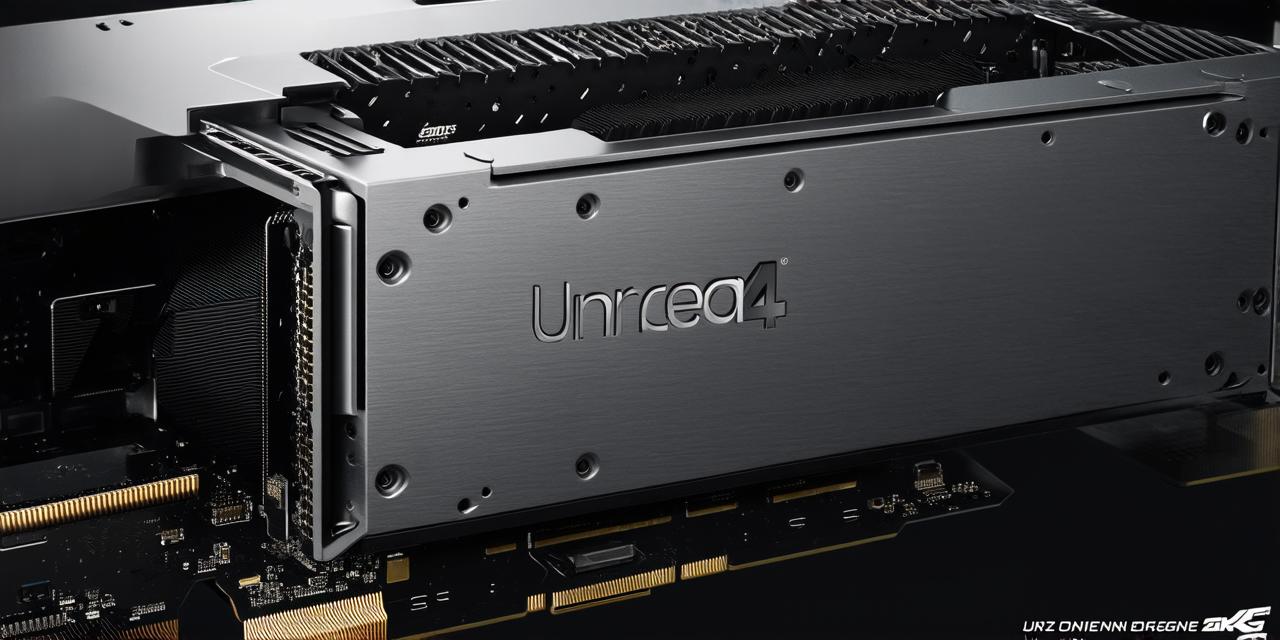If you’re interested in exploring the vast potential of Unreal Engine 4 (UE4), it’s important to know what hardware and software components you need to get started. While UE4 is a powerful game engine, it does require certain minimum system requirements to run smoothly. In this article, we will explore these requirements and provide real-life examples of how they affect your workflow as an Unreal Engine developer.
Hardware Requirements for UE4
CPU
The CPU (Central Processing Unit) is the brain of a computer and plays a crucial role in running UE4. For UE4, you need at least a dual-core processor with a clock speed of 2 GHz or higher. However, we recommend using a quad-core processor with a clock speed of at least 2.66 GHz for better performance.
RAM
RAM (Random Access Memory) is responsible for storing and retrieving data quickly. For UE4, you need at least 4GB of RAM, but we recommend using 8GB or more for smoother workflow.
Graphics Card
The graphics card is responsible for rendering images and videos. UE4 supports various NVIDIA and AMD graphics cards. However, we recommend using an NVIDIA GTX 960 or higher for better performance.
Storage
UE4 requires a hard disk drive (HDD) with at least 10GB of free space to install and run the engine. We recommend using a solid-state drive (SSD) for faster boot times and load times.
Software Requirements for UE4
Operating System
UE4 supports Windows 7 or later operating systems, including 64-bit versions. However, we recommend using the latest version of Windows 10 for better performance.
DirectX
DirectX is a set of APIs that enable developers to create graphics applications. UE4 requires DirectX 12 or higher to run smoothly. We recommend using the latest version of DirectX available on your operating system.
Visual Studio
Visual Studio is an integrated development environment (IDE) used for game development in UE4. You need a minimum version of Visual Studio 2013, but we recommend using the latest version of Visual Studio available to take advantage of new features and improvements.
Real-life examples of minimum system requirements for UE4
Example 1: Building a simple 2D game in UE4
If you’re building a simple 2D game using UE4, you can get away with lower hardware and software specifications. For example, you can use an Intel Core i3 processor with a clock speed of 2.5 GHz or higher, 4GB of RAM, and an NVIDIA GTX 750 or higher graphics card.
However, if your game involves complex graphics or physics simulations, you may need to upgrade your hardware and software specifications to ensure smooth performance. For example, you may need to use a quad-core processor with a clock speed of at least 3.2 GHz, 8GB of RAM, and an NVIDIA GTX 960 or higher graphics card for better performance.
Example 2: Building a complex VR game in UE4
If you’re building a complex virtual reality (VR) game using UE4, you need higher hardware and software specifications to ensure smooth performance. For example, you need at least an Intel Core i7 processor with a clock speed of 3.5 GHz or higher, 16GB of RAM, and an NVIDIA GTX Titan X or higher graphics card.
Additionally, you need a VR headset such as Oculus Rift or HTC Vive to test your game in a VR environment. The VR headset also requires additional hardware such as sensors and cameras to track the movement of the user’s head and hands.
Example 3: Building an enterprise-level application using UE4
If you’re building an enterprise-level application using UE4, you need even higher hardware and software specifications to ensure smooth performance. For example, you may need to use a dual Xeon processor with a clock speed of at least 2.8 GHz, 32GB of RAM, and multiple NVIDIA Tesla graphics cards for better performance.
Additionally, you need high-speed storage devices such as solid-state drives (SSDs) to ensure fast load times and boot times. You also need a robust network infrastructure to support large numbers of users accessing the application simultaneously.
FAQs
Q: Can I run UE4 on a Mac?
A: Unfortunately, UE4 does not support macOS operating systems. However, there are third-party tools available such as Wine that allow you to run Windows applications on macOS. However, we recommend using a Windows PC for better performance and compatibility with UE4.
Q: Do I need a dedicated graphics card to run UE4?
A: Yes, you need a dedicated graphics card to run UE4 smoothly. While some integrated graphics cards can handle basic tasks, they do not have the same level of performance as dedicated graphics cards. Dedicated graphics cards are designed specifically for gaming and other graphics-intensive tasks, and they offer better performance and compatibility with UE4.
Q: Can I use a laptop to run UE4?
A: Yes, you can use a laptop to run UE4, but it depends on the specifications of the laptop. Laptops with lower specifications may struggle to run UE4 smoothly, while laptops with higher specifications can handle more complex tasks. However, we recommend using a desktop PC for better performance and compatibility with UE4.
Q: What is the latest version of UE4?
A: As of March 2023, the latest version of UE4 is version 4.26.1. However, it’s recommended to check the official Unreal Engine website for the latest updates and features.
Conclusion
In conclusion, while UE4 has minimum system requirements, they are just that – minimum. To get the most out of this powerful game engine, you need higher hardware and software specifications. By understanding these requirements and upgrading your hardware and software as needed, you can ensure a smooth workflow and take advantage of all the features and capabilities that UE4 has to offer.
